Pilgrim Nuclear Power Plant Gears Up To Move Its Radioactive Waste
12:12 minutes
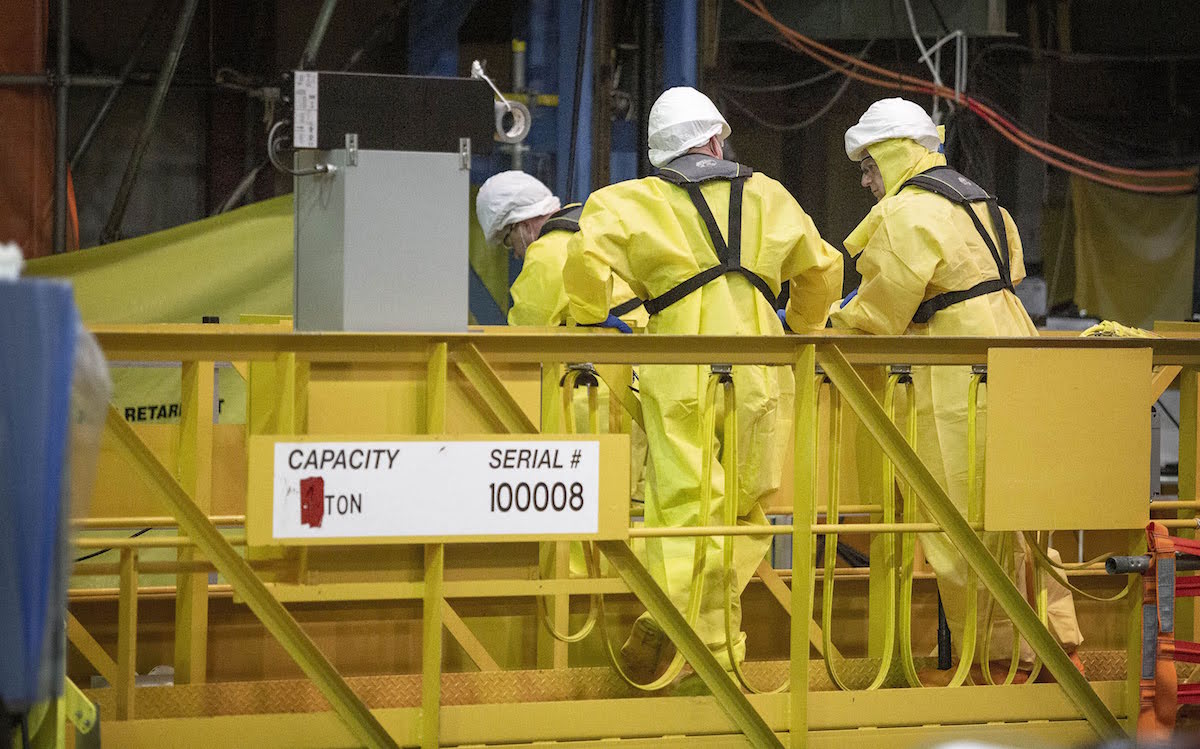
 This article is part of The State of Science, a series featuring science stories from public radio stations across the United States. This story by Bruce Gellerman originally appeared on WBUR on September 16, 2021.
This article is part of The State of Science, a series featuring science stories from public radio stations across the United States. This story by Bruce Gellerman originally appeared on WBUR on September 16, 2021.
Just before Thanksgiving, the Pilgrim Nuclear Power Plant in Plymouth is expected to reach a historic milestone. All the radioactive fuel that generated electricity—and controversy—for nearly half a century will finally be removed from the reactor building. It will be stored outside in special steel and cement casks.
The rare occasion will be celebrated by both supporters and opponents of the plant. But as the decommissioning of Pilgrim proceeds, concern over the long-term safety of the highly radioactive waste continues.
Even though Pilgrim Nuclear Power Plant stopped producing electricity two years ago, there are still armed guards in watchtowers, surveillance cameras spread over the site, mazes of barbed wire fences and concrete vehicle barriers.
Entry to the shuttered plant is highly restricted. Visitors are questioned, inspected and scanned repeatedly before being allowed to enter Pilgrim’s inner sanctum: the reactor.
David Noyes has access to all areas of the plant but still goes through the strict security measures; he swipes his magnetic badge and the doors to a security lock swoosh open.
“We’re going to go through the primary radiological check point to get into the radiologically controlled area,” he says.
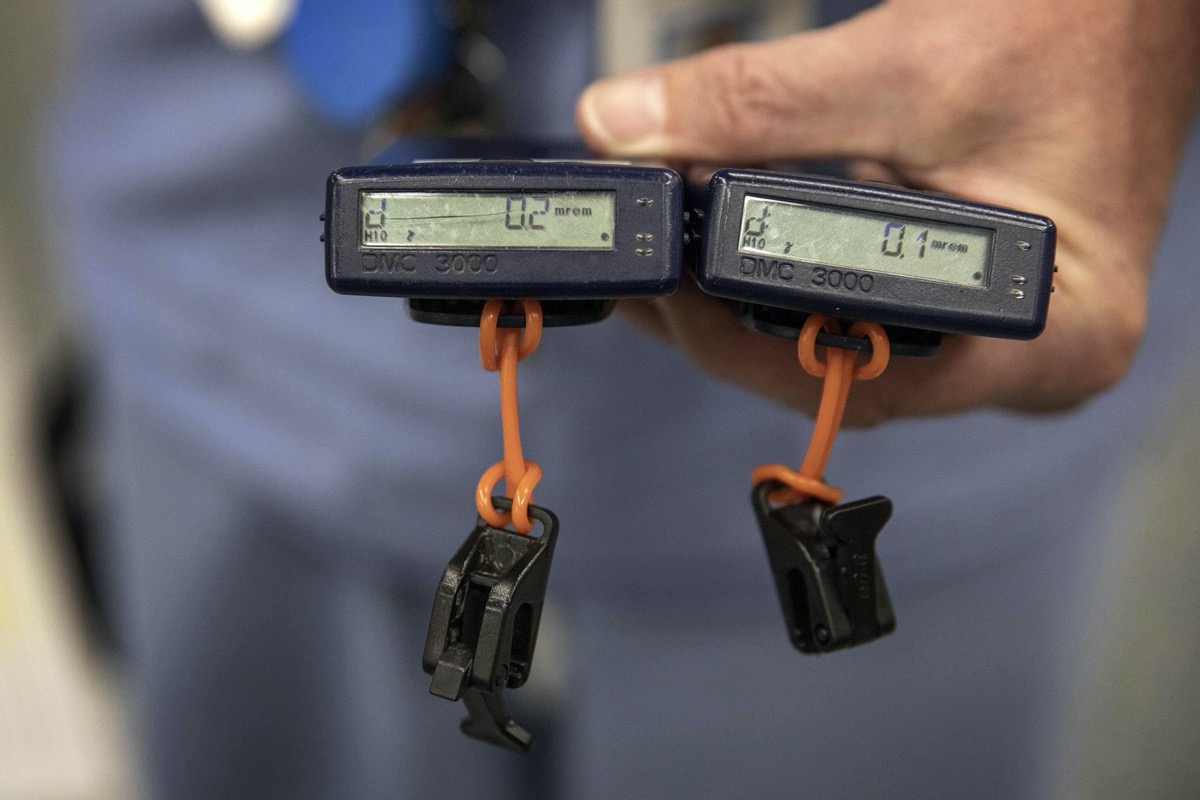
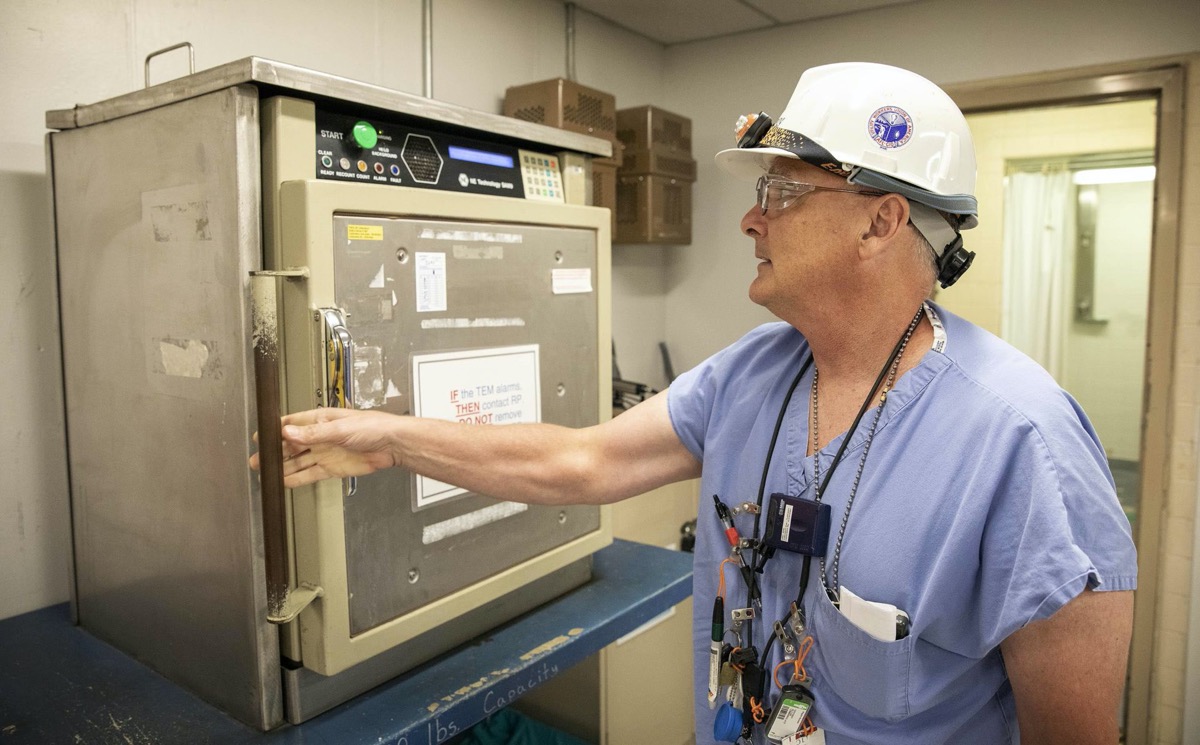
Noyes knows the Pilgrim Nuclear Power Plant inside and out. For 32 years, he worked at Pilgrim, rising from reactor operator to senior manager with Entergy, the company that owned and operated the plant until 2019 when it sold it to Holtec International.
The New Jersey-based company reportedly paid $1,000 for Pilgrim-security locks, stock and 47 years of highly-radioactive nuclear waste. In return, Holtec got access to a billion-dollar decommissioning fund, sort of like a nuclear 401k. The money was collected from utility customers and invested to pay for dismantling and decontaminating the plant when it came to the end of its productive life.
David Noyes came out of retirement to head-up the Pilgrim clean-up.
He’s now senior compliance manager with Comprehensive Decommissioning International (CDI), the company overseeing the cleanup. The company is owned by Holtec and SNC-Lavalin of Canada.
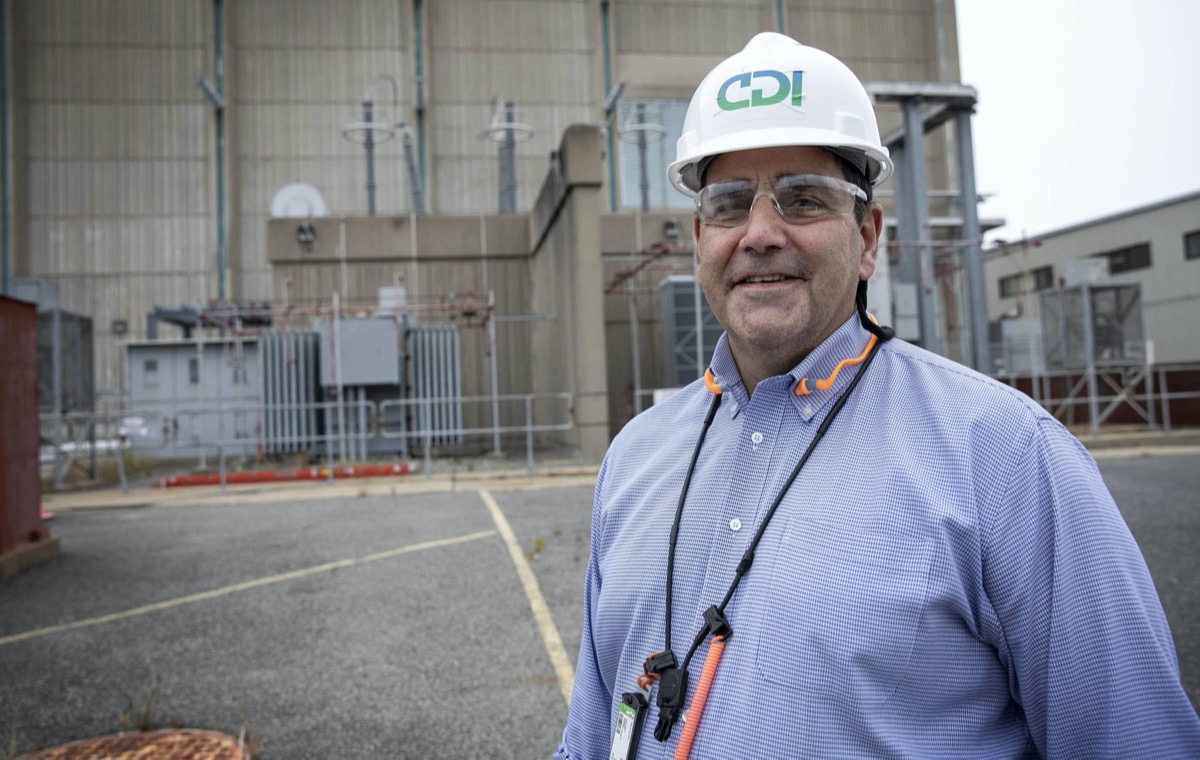
“A lot of us have stepped up to the challenge to decommission the site,” Noyes says. “We made a commitment when we were operating to see this through.”
Noyes witnessed much of Pilgrim’s troubled history. Several times, the Nuclear Regulatory Commission (NRC) considered it the worst run reactor in the nation. The plant’s GE-Mark I reactor was the same model as those at the ill-fated Fukushima nuclear plants.
In two years, CDI workers have removed the massive concrete blocks that shielded the top of the reactor, revealing the core of the reactor vessel. It’s surprisingly small, just 21 feet in diameter and 58 feet tall, yet Pilgrim produced enough electricity to power 700,000 homes.
“The fuel was very densely packed inside of it. It’s not very large,” says Noyes, carefully guiding the way along the marked path on the floor.
Pilgrim used uranium as its fuel. It came in pellets, each the size of a pencil eraser and weighing a third of an ounce. Each pellet generated the energy equivalent of a ton of coal, with no carbon emissions.
There were millions of pellets placed into rods, then bundled into fuel assemblies. In the reactor they became intensely hot and radioactive. Some of the radioactive waste produced decays harmlessly in days, weeks and months. But Cesium-137, like that released by the Chernobyl disaster, remains dangerous for decades and Plutonium-239 must be isolated, essentially, forever.
Holtec spokesman Pat O’Brien says all the fuel assemblies ever used at Pilgrim were stored in the 40-foot deep pool above the reactor.
“When their service life ended they went into the pool,” he says. “Before they were ever irradiated—that was the last time they saw the light of day.”
Over the years, more than 4,000 spent fuel assemblies were put into the pool—five times more than it was designed to hold.
There was no place else for the irradiated spent fuel to go. The Department of Energy failed to fulfill its legal obligation to take the radioactive waste from commercial nuclear power plants. A proposed final repository, dug deep into Utah’s remote Yucca Mountain, cost billions to build but failed to meet technical or political muster. As a result of that failure and the ensuing lawsuits, the DOE has paid billions more to shuttered nuclear sites where waste is stored, including Massachusetts’ Yankee Rowe, Maine Yankee and Connecticut Yankee.
With nowhere to go, Pilgrim’s spent fuel assemblies kept piling up in the pool. Without a containment shell, a leak or broken water pump could have led to catastrophic consequences, contaminating much of New England.
CDI technicians made removing the deadly radioactive assemblies from the spent fuel pool their first priority. Much to the everyone’s relief, they’re nearing the end of the process.
Workers manage the carefully-choreographed process by remote control, while watching on video screens.
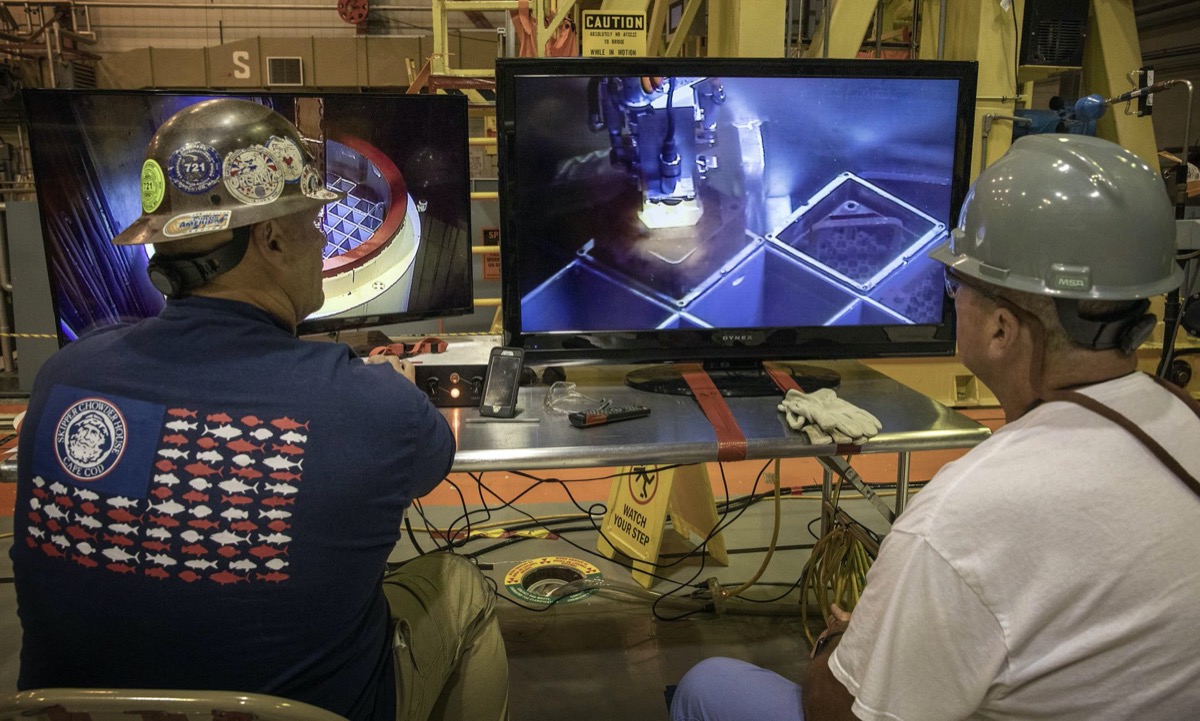
“The operator on the refuel bridge has a grapple … and it goes down into the spent fuel pool and it grapples an individual fuel assembly,” says David Noyes, pointing at the video monitor. “There’s an assembly being loaded into a multi-purpose canister. That’s all happening under 16 feet of water.”
It takes about three days to load one stainless-steel canister with radioactive waste, drain and dry it, fill it with helium to prevent corrosion, weld it shut and place it into a huge concrete storage casks. The casks look like giant soup cans, about 18 feet high, 11 feet in diameter.
In all, there will be 62 casks filled with spent fuel, two with other radioactive waste and one backup. Loaded, each weighs a third of a million pounds.
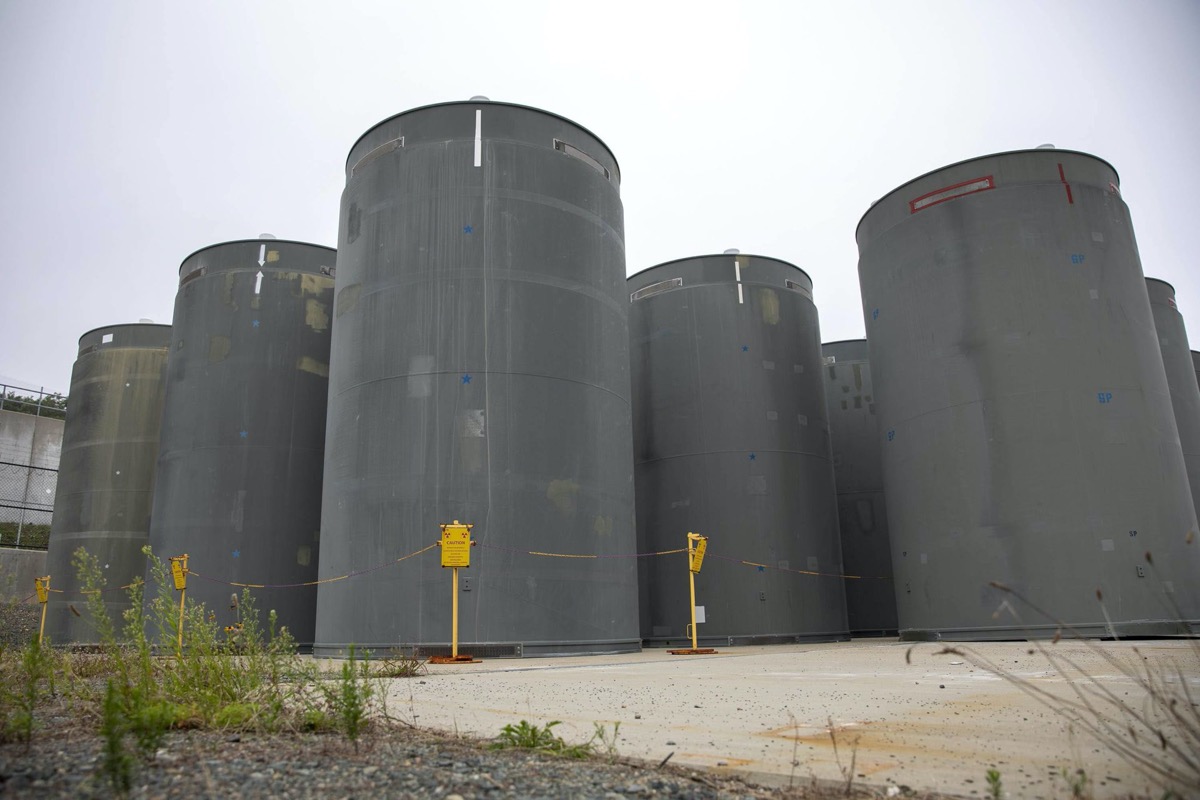
Holtec International makes the canisters and casks. The company owns five shut-down nuclear reactors at three plants, including Pilgrim, but has not yet fully decommissioned one yet. During a dry run at Pilgrim, the process hit a snag when a dummy assembly didn’t fit as intended into a multi-purpose canister.
The problem was soon solved, and workers have been loading casks filled with real spent fuel assemblies without a hitch.
But there was one major hurdle Pilgrim’s original designers had not planned for: moving the megaton casks outside. So workers had to jury-rig a rail system.
“This wasn’t considered at that time,” Noyes says. “It was never the intention to have to move fuel out of the reactor building ,so all of this rail system was designed after the fact.”
The pace of the plant clean-up is picking up speed. A huge, 80-wheel flatbed transport vehicle called a “Goldhofer” crawls past the reactor building at half a mile an hour.
“You can see we have almost used up all the site that we have on this first pad,” says Noyes, pointing to a slab of concrete where 40 casks stand on end. “You can see it’s almost full.”
The remote controlled Goldhofer treks up a hill 75 feet above sea level to a new, bigger storage location. The three-foot thick concrete pad—the size of a high-school gym and officially known as an “independent spent fuel storage facility”—can hold all 65 of Pilgrim’s casks, and sits well above the expected rising seas of climate change.
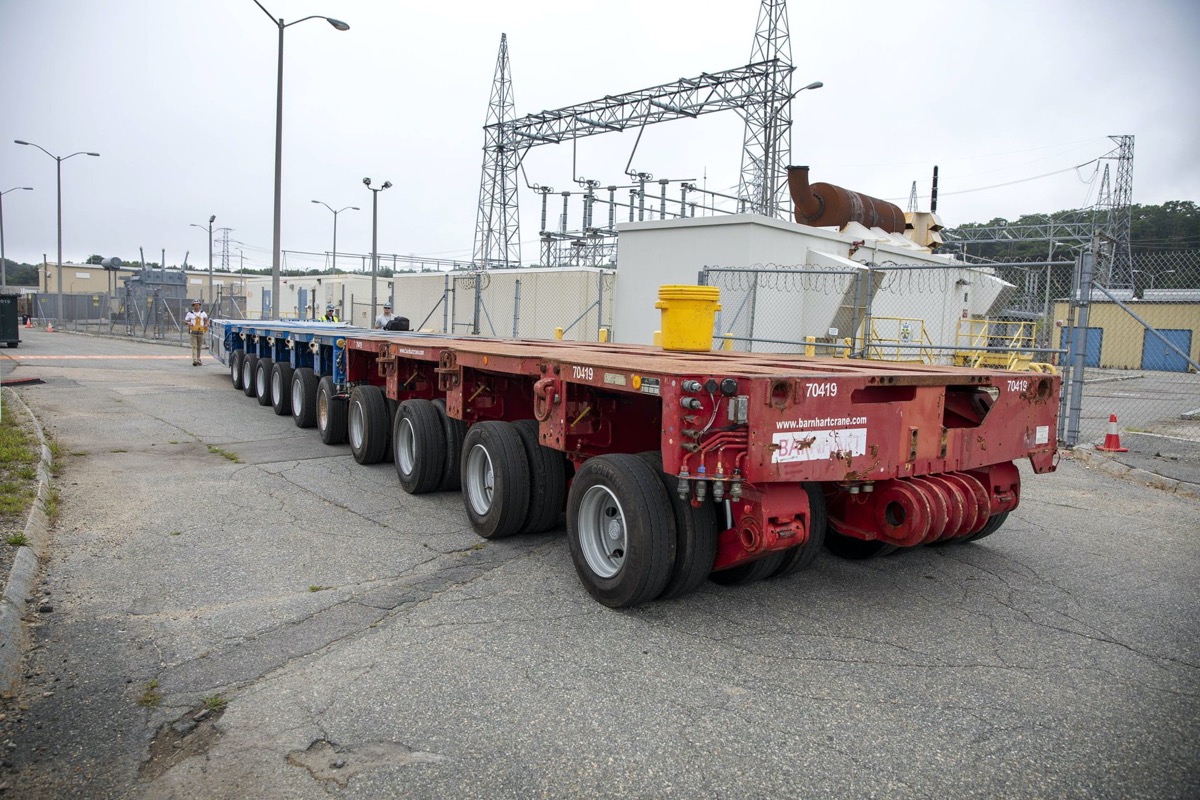
Safe storage of the nuclear waste is the name of the decommissioning game. Noyes says the goal is to consolidate all of the casks containing spent fuel assemblies into one small area.
Many buildings and machines on the Plymouth site contain asbestos and PCBs. CDI decommissioning workers will dig down at least three feet to remove chemically and radioactively contaminated soil.
Massachusetts Attorney General Maura Healy got the company to agree to clean up the site to a stricter standard than the federal government requires. She also got them to keep a quarter billion dollars from the decommissioning trust fund in reserve, just in case it runs out of money before the job is done.
Holtec owns the 1,600 acre site and has yet to say what it plans to do with it. (Eversource still owns the transformers that remain in the switch yard. The lines that carried nuclear-generated electricity to the grid could one day transmit power produced by offshore wind farms.)
It’s in Holtec’s interest to finish decommissioning Pilgrim as soon as safety and the Nuclear Regulatory Commission allow. The company gets to keep whatever is left of the billion dollar trust fund.
Legally the company has until 2068, but it plans to be finished by 2026.
When Pilgrim was operating it employed about 600 people. Now just 160 workers are decommissioning the plant. Soon after they’re done, there will be just 60 guards securing the new storage pad, which is surrounded by barbed-wire fences, vehicle barriers and other security measures designed to detect and delay intruders.
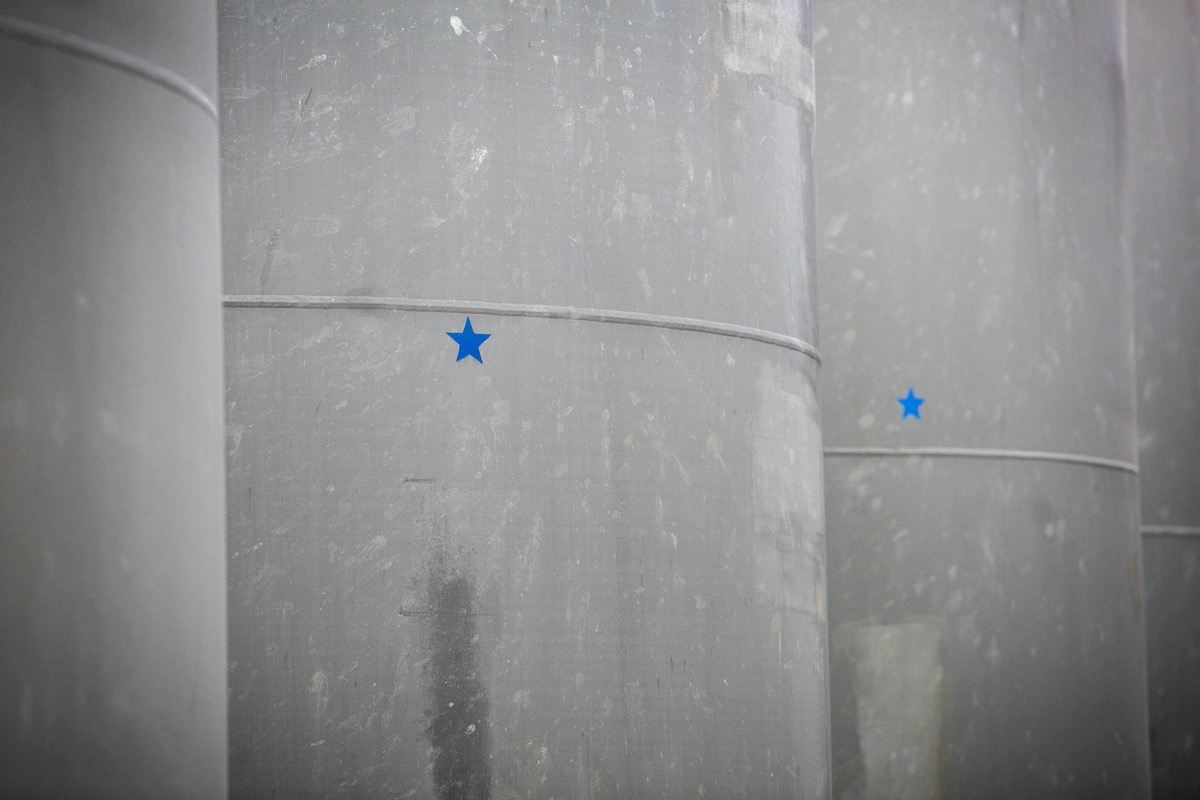
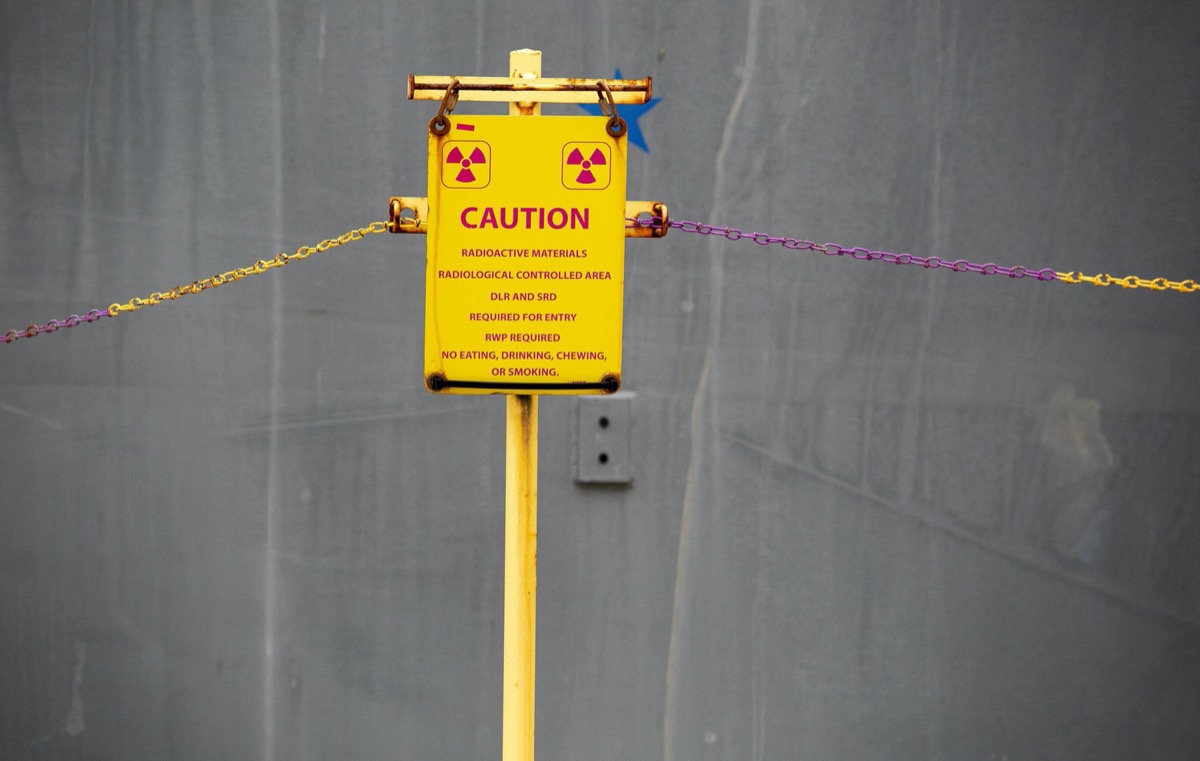
“The longer it takes for a bad guy to get to an area they can do radiological sabotage, the more efficient we can be at deploying the security force,” says Noyes.
Federal law prohibits drones from flying low over nuclear facilities, but airplanes aren’t prevented from the Pilgrim flightpath. However, since 9/11 the FAA has told pilots not to loiter over nuclear sites.
“Given the speed of commercial airliners, insufficient time would be available to track and intercept suspicious aircraft,” says NRC spokesman Neil Sheehan. However, “the NRC believes protecting against terrorist attacks by air should be directed by enhanced security at airports.”
O’Brien says the company can’t disclose the exact threat scenarios.
“We have simulations where we’ve flown missiles into these doesn’t breach the internal canister,” he says. “We have scenarios where you would take an F-16 loaded with fuel and fly it into it and they do not breach a canister.”
O’Brien says the steel and concrete casks are guaranteed for 25 years, but can protect the radioactive waste inside for a century, if need be. But critics charge that the spent fuel storage casks aren’t secure.
Activist Diane Turco, founder and executive director of Cape Downwinders, has opposed Pilgrim for nearly four decades. She says the storage pad is in plain sight, near a public road.
“If I can eyeball those casks, someone with malicious intent could do some serious damage,” she says.
Turco says she’s repeatedly gone on the Pilgrim property and gotten near the storage pad areas undetected.
“I was there more than half an hour and nobody ever came out,” she says.
At a recent meeting of the Nuclear Decommissioning Citizens Advisory Panel (NDCAP), which the state established to advise the governor on activities related to Pilgrim, board member Mary Lampert said she had received an email from a Pilgrim whistleblower about security concerns. The email claimed that there are not enough security workers on site, and that Holtec has not completed the training they have claimed they have done.
WBUR’s repeated attempted to contact the whistleblower were unsuccessful.
The Massachusetts Attorney General’s office says they are reviewing the whisleblower’s claims. Holtec says the charges aren’t true.
The company hopes to eventually ship Pilgrim’s storage casks to New Mexico, if federal regulators approve its plan to build an interim storage facility where it can consolidate thousands of casks being stored at 76 old nuclear reactors around the country. Earlier this week the NRC issued a license to a competitor to build and operate a facility in West Texas.
Until another storage facility is approved, Pilgrim’s toxic legacy will remain in Plymouth, sealed in giant casks on a storage pad above Cape Cod Bay.
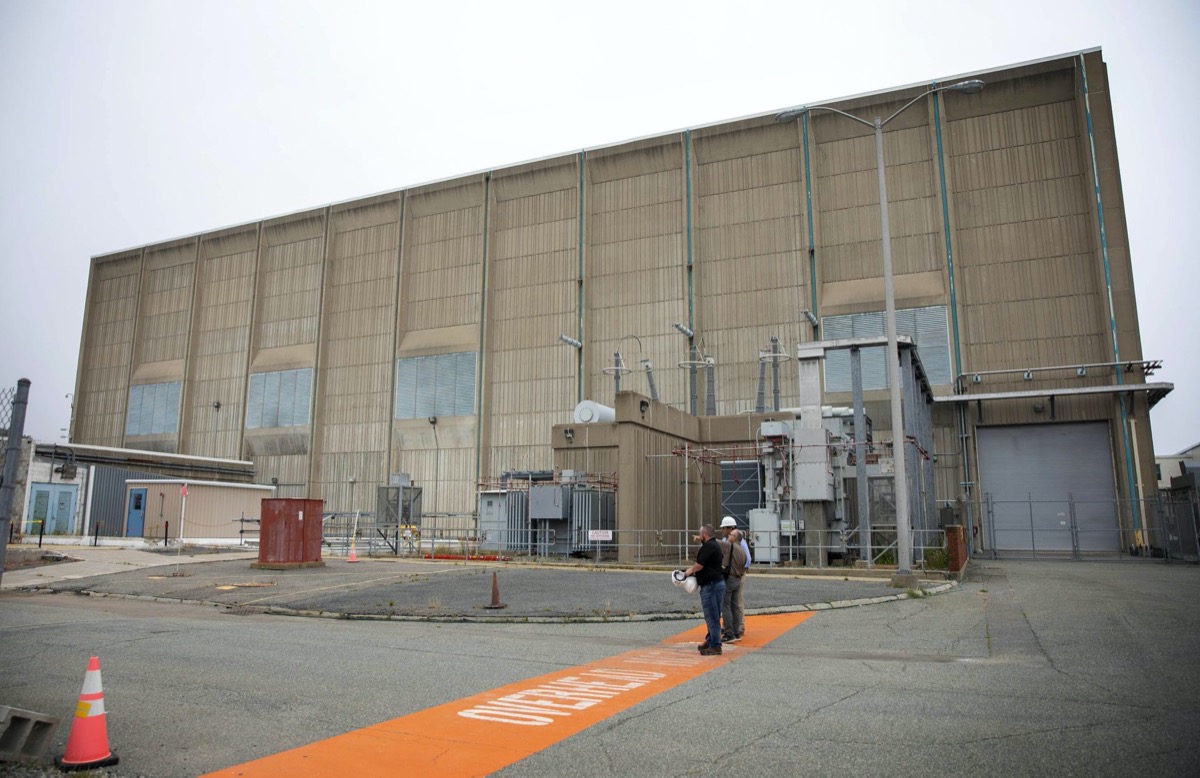
Invest in quality science journalism by making a donation to Science Friday.
Bruce Gellerman is a senior reporter at WBUR in Boston, Massachusetts.
IRA FLATOW: This is Science Friday. I’m Ira Flatow. Later in the hour, we’ll talk about a new book about the pandemic aimed at young readers. And we’ll consider the pigeon and shoebill stork in our Charismatic Creature Carnival. But first, it’s time to check in on the state of science.
WOMAN 1: This is KERA.
WOMAN 2: For WWNL–
WOMAN 3: St. Louis Public Radio.
WOMAN 4: Iowa Public Radio News.
IRA FLATOW: Local science stories of national significance. The Pilgrim nuclear power plant in Plymouth, Massachusetts, is nearly half a century old. It’s also been powered down for more than two years. By Thanksgiving, the plant will reach a milestone. All the radioactive fuel that remains inside will finally be removed, and that is a win for both opponents and supporters of nuclear power in the region.
But this is highly radioactive waste after all, and concerns continue over the long-term safety of the materials. Bruce Gellerman, senior reporter at WBUR in Boston, takes us inside the decommissioning of a nuclear power plant.
[INTERPOSING VOICES]
BRUCE GELLERMAN: The Pilgrim nuclear power plant stopped producing electricity two years ago, but there are still armed guards in watchtowers, surveillance cameras everywhere, and mazes of barbed wire fences. And you’re questioned, inspected, and scanned repeatedly before you enter Pilgrim’s inner sanctum, the reactor.
DAVID NOYES: So we’re going to go through the primary radiological checkpoint to get into the radiological controlled area.
BRUCE GELLERMAN: David Noyes knows Pilgrim inside and out. He worked here for 32 years, and came out of retirement to lead the cleanup.
DAVID NOYES: A lot of us have stepped up to the challenge to decommission the site. We made a commitment when we were operating that it would be our responsibility to see this through, and that’s really what we’re working toward now.
BRUCE GELLERMAN: Pilgrim had a troubled 47-year long history. Several times, the Nuclear Regulatory Commission called it the worst run reactor in the nation. When it shut down in 2019, Holtech International bought it reportedly for $1,000. In exchange, Holtech got access to a billion-dollar decommissioning trust fund, paid for by utility customers. Now the plant is being dismantled.
DAVID NOYES: This is the reactor vessel head that was on top of the reactor vessel.
BRUCE GELLERMAN: The reactor vessel was that small?
DAVID NOYES: Yes. The fuel was very densely packed inside of it. It’s not very large.
BRUCE GELLERMAN: Uranium pellets, packed into bundles called fuel assemblies, powered the reactor. Each pellet, the size of a pencil eraser, generated the energy equivalent of a ton of coal without the carbon emissions. In the reactor, the fuel produced enough electricity to power 700,000 homes, but became intensely hot and radioactive, deadly for tens of thousands of years. Spent fuel assemblies were removed and submerged in a deep pool above the reactor to cool, says Holtech tech spokesman, Pat O’Brien.
PAT O’BRIEN: You know, before they were ever irradiated, once they went in the pool, that was the last time they saw the light of day. You know, they were just into the reactor, and then once their service life was ended, they went into the pool.
BRUCE GELLERMAN: The pool stored over 4,000 spent fuel assemblies, five times more than it was designed to hold. There was no place else for them to go. For decades, the Department of Energy has failed to make good on its legal obligation to bury the waste from the nation’s commercial nuclear power plants.
DAVID NOYES: Hey guys, we really need that monitor moved this way.
BRUCE GELLERMAN: So for the past year, technicians in special jumpsuits have been removing Pilgrim’s highly radioactive assemblies from the pool and putting them into special concrete storage casks. David Noyes describes the choreographed procedure.
DAVID NOYES: The operator, on the refuel bridge, has a grapple. And it goes down into the spent fuel pool and it grapples an individual fuel assembly. You can see right here on the picture, there’s a fuel assembly being loaded into the multipurpose canister. That’s all happening underneath 16 feet of water.
BRUCE GELLERMAN: Each stainless steel canister holds 68 fuel assemblies. It takes about three days to load a canister into a huge concrete cask. In all, there’ll be 62 casks, each weighing more than 350,000 pounds. Holtech makes the canisters and casks. The company owns five shut down nuclear reactors, but never decommissioned one. And during a dry run at Pilgrim, it hit a snag when a dummy assembly didn’t fit into a cask. That problem was solved. but there was one major hurdle Pilgrim hadn’t planned for– moving the megaton casks outside.
DAVID NOYES: Down to this level of detail, that was not considered at that time.
BRUCE GELLERMAN: So David Noyes says workers had a jerry-rig a solution.
DAVID NOYES: It was never the intention to have to move fuel out of the reactor building, so all this rail system was designed after the fact.
BRUCE GELLERMAN: The rail carries casks to a huge door leading outside. A heavy-lift device moves them to a special storage pad nearby. But the pad can hold just 40 casks.
DAVID NOYES: You can see that we’ve almost used up all the site that we have available on this first pad. You can see that it’s almost full.
BRUCE GELLERMAN: That’s where the gold huffer comes in. It’s a huge 80-wheel flatbed transport vehicle. It crawls at half a mile an hour. Actually, it demonstrates the pace for decommissioning Pilgrim is picking up speed. The gold huffer carries casks to a new bigger pad further away from the rising tide of Cape Cod Bay. The independent spent fuel storage facility is the size of a high school gym, a gym covered in concrete three feet thick. So far, half a dozen casks have been moved there. The name of the game now, says David Noyes, is cask consolidation.
DAVID NOYES: So we will eventually shrink it down to just the pad that has the fuel assemblies on it. And then the other areas of the plant, while we decommission, will be essentially industrial security operation.
BRUCE GELLERMAN: Massachusetts Attorney General got Holtech to agree to stricter cleanup standards than the feds require, and the company has to keep a quarter of the billion dollars from the decommissioning trust fund in reserve, just in case it runs out of money before the job is done. Pilgrim had 600 workers. Now there are about 160 decommissioning the plant. After decommissioning, there’ll be just 60 security workers guarding the storage shed indefinitely. David Noyes says barbed wire fences and vehicle barriers are all part of the security plan.
DAVID NOYES: So the longer it takes for a bad guy to get to an area where they might be able to do radiological sabotage, the more efficient we can be at deploying the security of force to deal with that, whatever the threat might be.
[BIRD CALLING]
BRUCE GELLERMAN: A hawk circles high above the new cast storage pad. Federal law prohibits low flying drones over the site, but airplanes are allowed. The thinking? Airport security should prevent attacks. Holtech’s Pat O’Brien says specific threat scenarios are secret, but the steel and concrete casks, guaranteed for 25 years, can protect the radioactive waste for a century if need be.
PAT O’BRIEN: We have simulations where we’ve flown missiles into these. Does not breach the internal canister. We have scenarios where you would take an F-16 loaded with fuel and fly it into it, and they do not breach the canister.
BRUCE GELLERMAN: But critics charge the casks aren’t secure. The storage pad is near a public road, in plain sight.
DIANE TURCO: If I can eyeball those casks, somebody with malicious intent could do some serious damage.
BRUCE GELLERMAN: Activist Diane Turco, founder and Executive Director of Cape Town Winders, has opposed Pilgrim for nearly four decades. She says she’s repeatedly gone on the Pilgrim property and near the storage pads undetected.
DIANE TURCO: And I was there for more than, well, about a half an hour, and nobody ever came out.
BRUCE GELLERMAN: Turco is a board member of a community advisory group that meets regularly with Holtech and the NRC. Another long-time anti-nuclear activist is Mary Lampert. She’s head of Pilgrim Watch, and a member of the board of a community advisory group that meets regularly with Holtech and the NRC. Lampert says she recently received an email from a Pilgrim whistleblower.
MARY LAMPERT: A security worker on site told the NRC that there are not enough security workers there now. And have not done the training that they claim to have done. That is what the worker said.
BRUCE GELLERMAN: The NRC and Massachusetts Attorney General say they’re reviewing the whistleblower’s claims. Holtech says the charges aren’t true. Legally, the company has until 2068 to decommission Pilgrim, but Holtech plans to finish the job in just five years. By then, it hopes regulators will allow it to build an interim storage facility in New Mexico, where spent fuel from Pilgrim and other old nuclear reactors can be stored for a century or longer, until a final disposal site is found.
Meanwhile, at the new storage pad in Pilgrim, the plant’s radioactive legacy, that generated so much of our electricity, stands sealed in giant stainless steel and concrete casks waiting for that day.
IRA FLATOW: That story was by Bruce Gellerman, senior reporter at WBUR in Boston. And Bruce joins us now to answer some of the questions that remain, as the Pilgrim nuclear plant continues its decommission. Hi, Bruce. Nice to have you with us today.
BRUCE GELLERMAN: Thank you very much for having me.
IRA FLATOW: Let’s talk about this. Now this nuclear waste is being put into casks. But then what? I mean, what happens for the long term?
BRUCE GELLERMAN: [CHUCKLES] Well, it has been a long term. I mean, it goes into these things, as you say, these dry cask storage things. They’re giant soup can-looking devices that are supposed to be keeping this stuff basically safe and isolated from the rest of humanity for an indefinite period of time. We’ve been in this nuclear era for 70 years, and all the waste has been going– from these commercial reactors at least– has been going into these giant soup cans.
It’s been a game of– I guess you’d call it kick the storage cask down the road. Because they’ve been sitting on all of the nuclear reactors that have been decommissioned so far. So we’ve got, I don’t know, 67 sites in 34 states with these things just sitting there.
IRA FLATOW: So this isn’t just a problem at the Pilgrim plant, it sounds like.
BRUCE GELLERMAN: Yeah. All the plants have to keep their waste, because the federal government didn’t make good on their promise to collect all this stuff and take it off site, and put it someplace permanent. It was supposed to go to Yucca mountain in Nevada.
IRA FLATOW: Ah, yes. I remember that.
BRUCE GELLERMAN: I bet you do. It turns out to be a $19 billion hole in the ground that’s been closed up because of political and technological difficulties. And now, they don’t have any idea of where to put this stuff.
IRA FLATOW: Yeah. And of course, they’re talking about storage for tens or hundreds of years, but we know that those wastes are going to be around for tens of thousands of years.
BRUCE GELLERMAN: Yeah, this stuff– I mean, you got plutonium 237, 239. This stuff has a half-life of 24,000 years. We’re talking essentially forever.
IRA FLATOW: Huh. So how is the region then replacing the nuclear power? What are they substituting swapping in?
BRUCE GELLERMAN: Well, that’s a really good question, Ira, because these things were really powerful reactors. Even the small ones like Pilgrim. Pilgrim powered 700,000 homes. You pull the plug on one of those babies, and you got a problem. And we have a problem. We only have three reactors left in New England. They produce 25% of our energy, and all of that is carbon-free energy. So we’ve really got to grow very, very, very quickly in renewables, offshore wind, and solar.
IRA FLATOW: Yeah, OK. Well, we’ll follow you, Bruce, and see how things work out there. Thanks for taking time to be with us today.
BRUCE GELLERMAN: You bet. Take care, Ira.
IRA FLATOW: Bruce Gellerman, senior reporter at WBUR in Boston.
Copyright © 2021 Science Friday Initiative. All rights reserved. Science Friday transcripts are produced on a tight deadline by 3Play Media. Fidelity to the original aired/published audio or video file might vary, and text might be updated or amended in the future. For the authoritative record of Science Friday’s programming, please visit the original aired/published recording. For terms of use and more information, visit our policies pages at http://www.sciencefriday.com/about/policies/
Kathleen Davis is a producer and fill-in host at Science Friday, which means she spends her weeks researching, writing, editing, and sometimes talking into a microphone. She’s always eager to talk about freshwater lakes and Coney Island diners.
John Dankosky works with the radio team to create our weekly show, and is helping to build our State of Science Reporting Network. He’s also been a long-time guest host on Science Friday. He and his wife have three cats, thousands of bees, and a yoga studio in the sleepy Northwest hills of Connecticut.
Ira Flatow is the founder and host of Science Friday. His green thumb has revived many an office plant at death’s door.